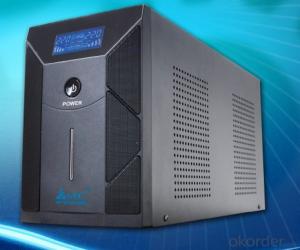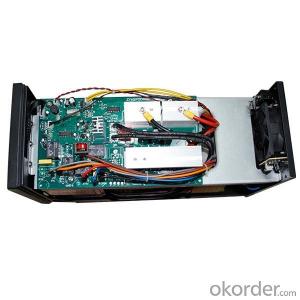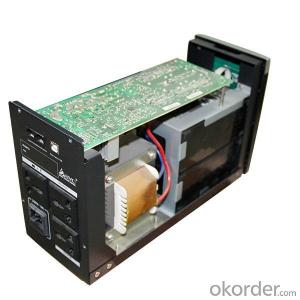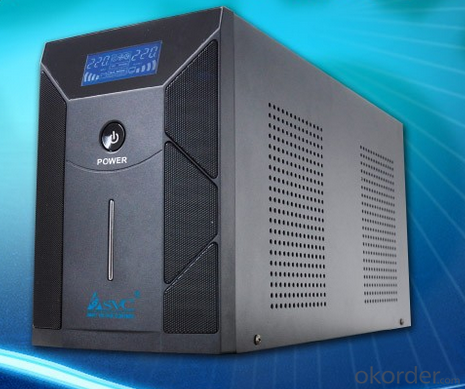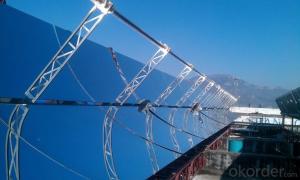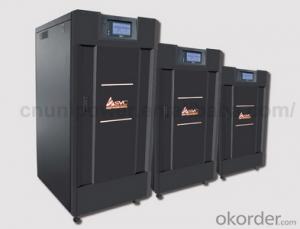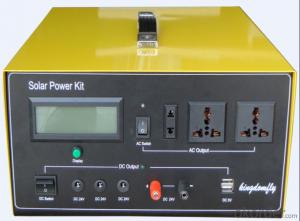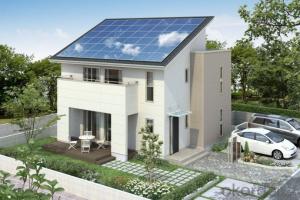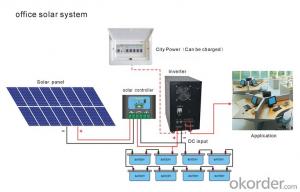Solar Energy Systems Gilbert - Portable Line Interactive Eco 2KVA Computer Battery Home UPS Sine Wave
- Loading Port:
- China main port
- Payment Terms:
- TT OR LC
- Min Order Qty:
- 20 carton
- Supply Capability:
- 10000 carton/month
OKorder Service Pledge
OKorder Financial Service
You Might Also Like
Sine Wave Portable Line Interactive ECO 2KVA Computer Battery Home UPS

| Model | V-2000 | V-3000 | ||
| Capacity | 2000VA/1200W | 3000VA/1800W | ||
| INPUT | ||||
| Input voltage | 110/120Vac or 220/230/240Vac | |||
| Input voltage range | 85~150Vac/175~275Vac | |||
| Frequency range | 60/50Hz/(Auto sensing) | |||
| OUTPUT | ||||
| Output voltage | 110/120Vac or 220/230/240Vac | |||
| Output voltage range | 102~132Vac/200~255Vac | |||
| Output frequency | 60±0.5Hz or 50±0.5Hz(Batt.mode) | |||
| Output wave form | PWM(Batt. mode) | |||
| Transfer time | Typical 2-6ms,10ms max | |||
| BATTERY | ||||
| QTY.&capacity of battery | 12V/7AII×4pcs | 12V/9AII×4pcs | ||
| Charging period | 4-6 hours recover to 90% capacity | |||
| PROTECTION | ||||
| Full Protention | Low voltage&overload&short circuit protection | |||
| PHYSICAL | ||||
| Net weight (kg) | 18.0 | 20.0 | ||
| Unit dimention (mm) | 340*110*265 | |||
| ENVIRONMENT | ||||
| Environment of performance | Temperature 0℃~40℃, Humidity 20%~90% | |||
| Noise level | ≤ 40dB(lm) | |||
| MANAGEMENT | ||||
| LCD or LED, RJ45/11 & USB | Optional | |||
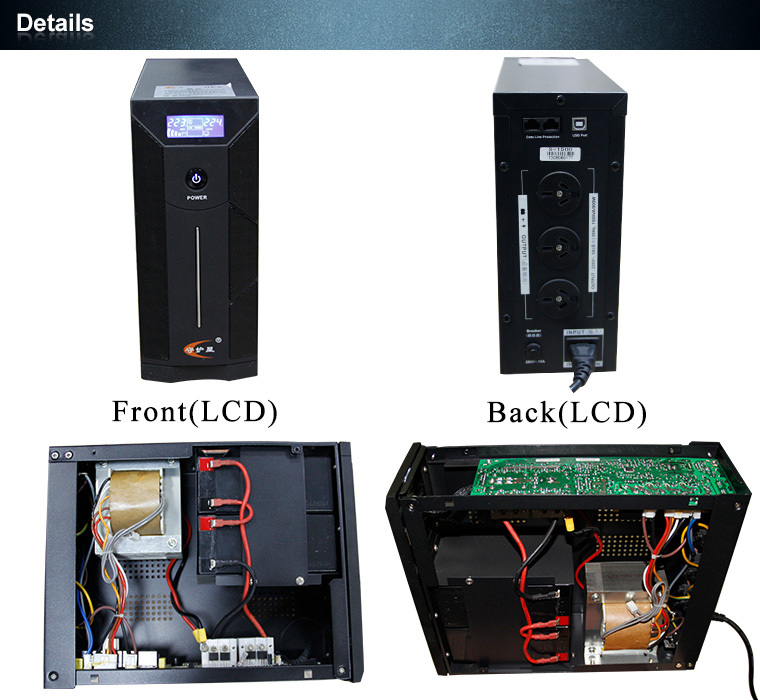

1. Wide range of input voltage
The UPS can offer normal and stable service voltage under its input voltage range. When the input voltage is out of its range the machine will switch to battery mode automatically to keep the output power in order to protect the equipment, such as computers, ensure they will not be damaged by the over high or over low voltage, users can continue the operation of equipment for a while or save the data on computers while the power network is abnormal.
2. Wide range of AVR(Automatic voltage regulation)
In the product’s input voltage range and under 3 steps of intelligent AVR function, it can provide a stable output voltage.
3. Automatic self detection when UPS on(LED).
Before the UPS on, red, yellow, blue LED will light up two times by cycle turns, after self detection UPS switch to AC mode/battery mode or working mode.
4. Silence function
In the "battery mode", shortly press the switch to turn off the buzzer. But the battery is about to run out or the load is too heavy, the buzzer sound cannot be muted.
5. Overload protection
In the battery mode, output voltage turn down correspondingly when it is overload, after the capacity of load is lower than the rated power then output voltage will back to rated value, it ensures the UPS will not shut down by abrupt overload which caused by surging current during the computer is working and other equipment is added.
6. Short circuit protection
When the mis-operation caused the load short circuit or computer failure (such as power tube breakdown of switch) cause short circuit, the UPS will shutdown automatically for protection.
7. The low current switch
This UPS adopts low current switch to extend the service life which is longer than conventional battery and high current switch in AC current path.
8. Automatic charging
There are two charging mode, charging time is faster than ordinary charging mode, higher efficiency, and greatly prolonging the service life of the battery.
9. With a bypass output
Independent bypass output socket for external printers or scanners of computer peripherals, with surge protection of the load.
- Q: Can solar energy systems be used to power boats or yachts?
- Yes, solar energy systems can be used to power boats or yachts. Solar panels can be installed on the roof or deck of the boat or yacht to generate electricity from the sun. This energy can then be used to power the boat's electrical systems, including lights, navigation equipment, and even propulsion systems. Solar power is a sustainable and renewable energy source, making it an environmentally friendly option for powering boats and yachts.
- Q: What is the role of solar thermal collectors in solar energy systems?
- Solar thermal collectors play a crucial role in solar energy systems by harnessing the sun's heat and converting it into usable thermal energy. They absorb sunlight and convert it into heat, which can then be used for various purposes such as heating water, generating electricity, or providing space heating. These collectors are responsible for capturing and utilizing the sun's thermal energy, making them a key component in the overall efficiency and effectiveness of solar energy systems.
- Q: What is the impact of shade from nearby buildings or trees on the performance of solar panels?
- The impact of shade from nearby buildings or trees on the performance of solar panels is significant. Shade reduces the amount of sunlight reaching the panels, which in turn decreases their efficiency. Even a small amount of shade can have a noticeable impact on the overall power output of the panels. It is crucial to ensure that solar panels are installed in locations with minimal shade to maximize their performance and energy generation.
- Q: What is net metering and how does it work with solar energy systems?
- Net metering is a billing arrangement that allows solar energy system owners to receive credit for the excess electricity they generate and feed back into the grid. With net metering, a bi-directional meter is installed, which measures both the electricity consumed from the grid and the excess electricity generated by the solar system. This excess electricity is then credited to the owner's account, effectively offsetting their future electricity consumption. When the solar system produces more electricity than is consumed, the surplus is fed back into the grid, and the owner receives credits for it. These credits can be used to offset the electricity consumed during periods when the solar system is not generating enough power, such as at night or during cloudy days. Overall, net metering allows solar energy system owners to maximize their investment by ensuring they benefit from the excess electricity they generate.
- Q: How does the angle of incidence affect the performance of solar panels?
- The angle of incidence significantly affects the performance of solar panels. When the angle of incidence is perpendicular to the sun's rays (90 degrees), the panels receive the maximum amount of solar energy, resulting in the highest efficiency. As the angle deviates from perpendicular, the amount of energy captured decreases, leading to reduced performance. Therefore, adjusting the angle of solar panels to match the sun's position throughout the day optimizes their efficiency and overall performance.
- Q: Can solar energy systems be used for lighting outdoor spaces?
- Certainly, outdoor spaces can be illuminated using solar energy systems. Typically, solar lighting systems comprise solar panels, batteries, and LED lights. Sunlight is collected by the solar panels and converted into electricity, which is then stored in the batteries. The LED lights are powered by the stored electricity and provide illumination for outdoor areas like gardens, pathways, patios, or parks. There are various advantages to using solar-powered outdoor lighting systems. Firstly, they are eco-friendly since they do not emit any greenhouse gases during operation. Moreover, they do not rely on an external power source, making them independent of the electrical grid. This makes them particularly suitable for remote or off-grid locations where connecting to the grid may be challenging or expensive. Solar outdoor lighting systems are also cost-effective in the long term. Although the initial installation cost may be higher compared to traditional lighting systems, there are no monthly electricity bills associated with solar lighting. Furthermore, these systems have minimal maintenance requirements as the solar panels and batteries are designed to endure different weather conditions. Another benefit of solar lighting systems is their versatility and ease of installation. Since they do not require underground wiring or electrical connections, they can be effortlessly installed in any outdoor space. This makes them ideal for temporary or seasonal lighting needs as they can be easily relocated or repositioned. In conclusion, solar energy systems can definitely be utilized for illuminating outdoor spaces. They offer a multitude of benefits including environmental sustainability, cost-effectiveness, low maintenance, and easy installation. Solar lighting systems provide a practical and dependable solution for illuminating outdoor areas while minimizing energy consumption and reducing carbon footprint.
- Q: What permits are required to install a solar energy system?
- The permits needed for installing a solar energy system can differ based on the location and specific regulations of the area. Nevertheless, there are typically a few common permits that most jurisdictions require. To begin with, the installation of solar panels or any structural modifications usually necessitates a building permit. This permit guarantees that the system is installed safely and adheres to the building codes and regulations of the area. Furthermore, an electrical permit is often mandatory because the installation of a solar energy system involves connecting electrical components. This permit ensures that a licensed electrician carries out the electrical work and meets the electrical safety standards of the area. In some cases, additional permits or approvals may also be required by certain jurisdictions. For example, a zoning permit may be necessary to ensure that the installation complies with local zoning laws and does not violate any height restrictions or setback requirements. It is important to keep in mind that permit requirements and procedures can vary significantly. Therefore, it is always advisable to consult the local authorities or building department to determine the specific permits needed for installing a solar energy system in a particular area. Collaborating with a reputable solar installer or contractor can also be beneficial as they are generally familiar with the local permit requirements and can assist in obtaining the necessary permits.
- Q: How do solar energy systems impact the carbon footprint of a home?
- Solar energy systems have a significant positive impact on reducing the carbon footprint of a home. By harnessing the power of the sun to generate electricity, solar energy systems produce clean and renewable energy, resulting in a significant reduction in greenhouse gas emissions. Conventional electricity generation relies heavily on fossil fuels such as coal, oil, and natural gas, which release carbon dioxide and other harmful pollutants into the atmosphere. These emissions contribute to global warming and air pollution, leading to adverse health effects and environmental degradation. In contrast, solar energy systems produce electricity without any emissions or air pollution. The photovoltaic cells in solar panels convert sunlight into electricity directly, without the need for combustion or any harmful byproducts. As a result, solar energy systems eliminate greenhouse gas emissions and reduce the reliance on fossil fuels. By utilizing solar power, homeowners can significantly decrease their carbon footprint. The amount of carbon dioxide emissions avoided depends on the size and efficiency of the solar energy system, as well as the amount of electricity consumed. However, on average, a typical residential solar energy system can offset approximately 15,000 pounds of carbon dioxide emissions per year. This is equivalent to planting around 150 trees annually or driving a car for 10,000 miles. Moreover, solar energy systems can help homeowners achieve energy independence and reduce their reliance on the electrical grid. By generating their own clean electricity, homeowners can reduce the demand for fossil fuel-based energy sources, further reducing carbon emissions on a larger scale. In summary, solar energy systems have a transformative impact on the carbon footprint of a home. They offer a sustainable and environmentally friendly alternative to conventional electricity generation, reducing greenhouse gas emissions and mitigating climate change. Installing solar panels not only helps homeowners save money on electricity bills but also contributes to a cleaner and healthier planet for future generations.
- Q: What are the main components of a solar energy system?
- The main components of a solar energy system include solar panels, an inverter, a charge controller (for battery storage systems), batteries (for off-grid systems), and a meter (to measure electricity production and consumption). Additionally, a solar energy system may also have mounting hardware, wiring, and a monitoring system.
- Q: Can solar energy systems be used off-grid?
- Yes, solar energy systems can be used off-grid. Off-grid solar systems are designed to generate and store electricity independently, without the need for connection to the traditional power grid. These systems consist of solar panels, batteries for energy storage, and inverters to convert the DC electricity produced by the panels into usable AC electricity. Off-grid solar systems are particularly useful in remote areas where grid connection is not available or economically viable.
Send your message to us
Solar Energy Systems Gilbert - Portable Line Interactive Eco 2KVA Computer Battery Home UPS Sine Wave
- Loading Port:
- China main port
- Payment Terms:
- TT OR LC
- Min Order Qty:
- 20 carton
- Supply Capability:
- 10000 carton/month
OKorder Service Pledge
OKorder Financial Service
Similar products
Hot products
Hot Searches
Related keywords
